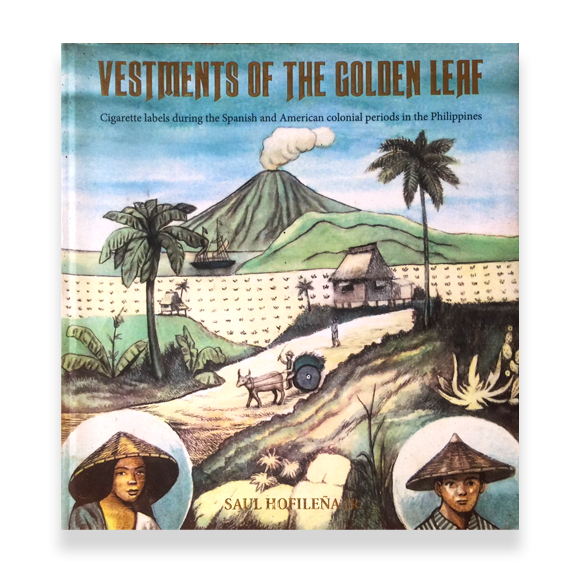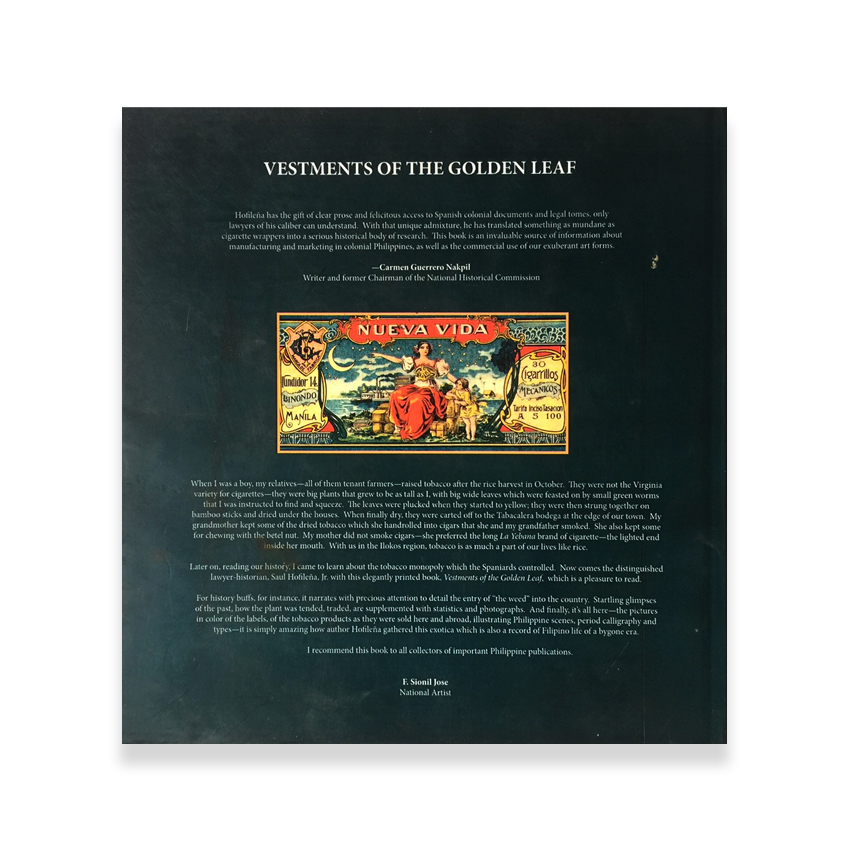Books


Vestments of the Golden Leaf (2014)
Hardcover, Coffee table book, 11” x 10.5”, 293 pages
Cigarette wrappers as a serious historical body of research. “This
book is an invaluable source of information about manufacturing and
marketing in colonial Philippines, as well as the commercial use of our
exuberant art forms.” – Carmen Guerrero Nakpil.
“When I was a boy, my relatives—all of them tenant farmers—raised tobacco after the rice harvest in October. They were not the Virginia variety for cigarettes—they were big plants that grew to be as tall as I, with big wide leaves which were feasted on by small green worms that I was instructed to find and squeeze. The leaves were plucked when they started to yellow; they were then strung together on bamboo sticks and dried under the houses. When finally dry, they were carted off to the Tabacalera bodega at the edge of our town. My grandmother kept some of the dried tobacco which she handrolled into cigars that she and my grandfather smoked. She also kept some for chewing with the betel nut. My mother did not smoke cigars—she preferred the long La Yebana brand of cigarette—the lighted end inside her mouth. With us in the Ilokos region, tobacco is as much a part of our lives like rice. Later on, reading our history, I came to learn about the tobacco monopoly which the Spaniards controlled. Now comes the distinguished lawyer-historian, Saul Hofileña, Jr. with this elegantly printed book, Vestments of the Golden Leaf, which is a pleasure to read.
For history buffs, for instance, it narrates with precious attention to detail the entry of “the weed” into the country. Startling glimpses of the past, how the plant was tended, traded, are supplemented with statistics and photographs. And finally, it’s all here—the pictures in color of the labels, of the tobacco products as they were sold here and abroad, illustrating Philippine scenes, period calligraphy and types—it is simply amazing how author Hofileña gathered this exotica which is also a record of Filipino life of a bygone era.
I recommend this book to all collectors of important Philippine publications.” —National Artist F. Sionil Jose